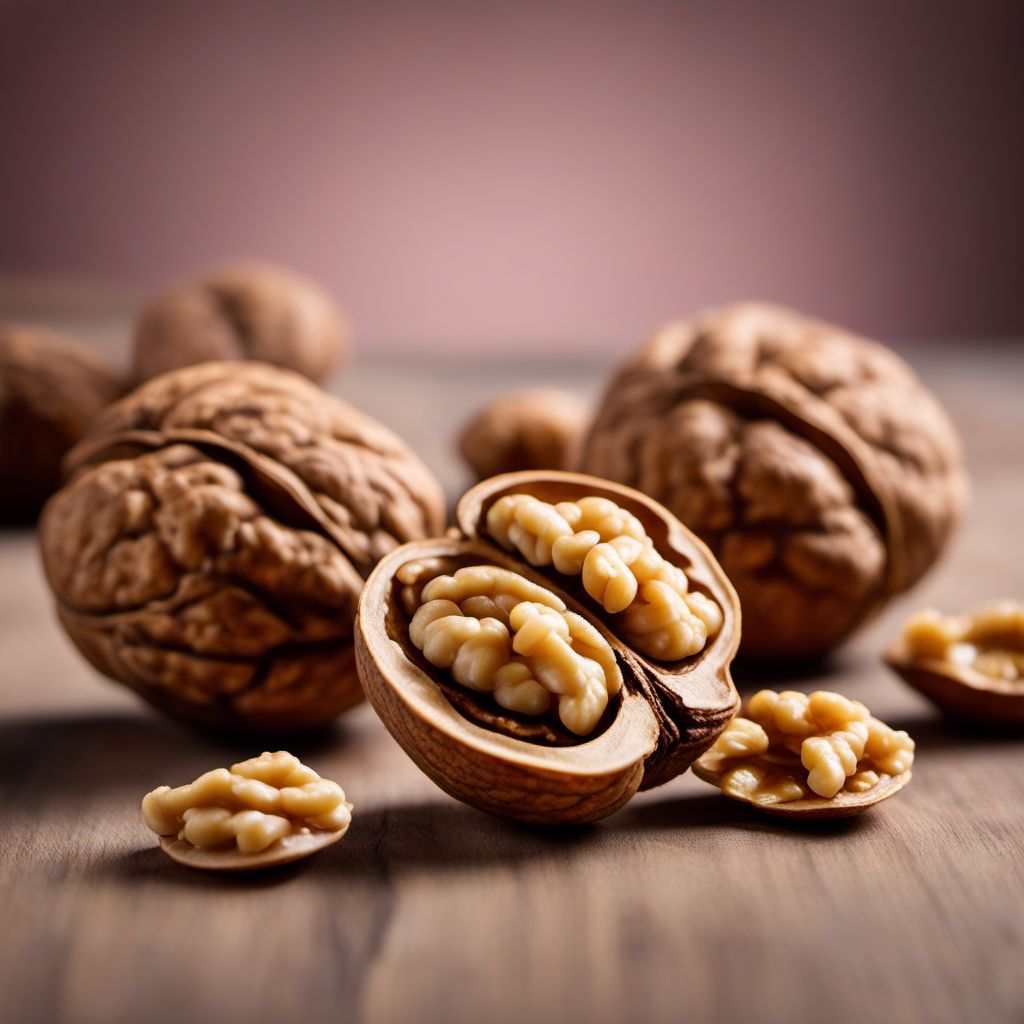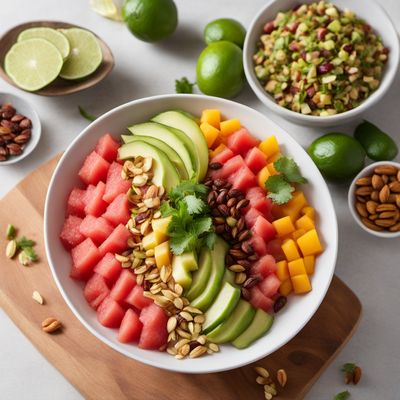
Ingredient
Walnuts and similar-
The Nutty Goodness of Walnuts
Walnuts are oval-shaped nuts with a hard, wrinkled shell that encases a rich, creamy kernel. The kernels have a pale, golden-brown color and a buttery texture. They have a mild, slightly sweet flavor with a hint of bitterness. Walnuts are often used in baking, salads, and as a topping for desserts or breakfast dishes.
Origins and history
Walnuts have a long history dating back thousands of years. They are believed to have originated in the regions of Central Asia and the Mediterranean. Walnuts were highly valued by ancient civilizations, including the Greeks and Romans, who considered them a symbol of fertility and intellect. Over time, walnuts spread to different parts of the world, and today they are cultivated in many countries, including the United States, China, and Iran.
Nutritional information
Walnuts are a nutrient-dense food, packed with healthy fats, protein, and fiber. They are also a good source of vitamins and minerals, including vitamin E, magnesium, and copper. Additionally, walnuts contain antioxidants and omega-3 fatty acids, which have been linked to various health benefits, such as reducing inflammation and improving heart health. However, it's important to consume walnuts in moderation due to their high calorie content.
Allergens
Walnuts may cause allergic reactions in some individuals, particularly those with tree nut allergies. It is important to be cautious and avoid walnuts if you have a known allergy.
How to select
When selecting walnuts, look for nuts that are plump, well-sealed, and free from cracks or holes. Shake the nuts to ensure they do not rattle, as this may indicate they are stale. Avoid walnuts with a rancid or bitter smell. If possible, choose organic walnuts to minimize exposure to pesticides.
Storage recommendations
To keep walnuts fresh and prevent them from turning rancid, store them in an airtight container in a cool, dry place, such as the refrigerator or pantry. Properly stored walnuts can maintain their quality for up to a year. If you prefer a crispier texture, you can also store walnuts in the freezer for longer-term storage.
How to produce
Walnut trees require a long growing season and thrive in temperate climates. They can be grown from walnut tree saplings or propagated from seeds. However, growing walnut trees from seeds can be a lengthy process, as it may take several years for the trees to bear fruit. It is recommended to consult local gardening resources or experts for specific guidance on growing walnuts in your area.
Preparation tips
Walnuts can be enjoyed in a variety of ways. They can be eaten raw as a snack or roasted to enhance their flavor. Walnuts are commonly used in baking, adding a crunchy texture and nutty taste to cookies, cakes, and bread. They are also a popular ingredient in salads, where they provide a satisfying crunch. Additionally, walnuts can be ground into a paste to make homemade walnut butter or incorporated into savory dishes like pesto or stuffing.
Substitutions
Pecans, almonds, or hazelnuts can be used as substitutes for walnuts in recipes. These nuts offer similar textures and flavors that can complement various dishes. However, keep in mind that each substitute may slightly alter the taste and overall profile of the dish.
Culinary uses
Walnuts are widely used in both sweet and savory dishes. They are a common ingredient in traditional desserts like baklava, where they are layered with phyllo dough and sweet syrup. In savory dishes, walnuts are often paired with cheese, such as in walnut and blue cheese salad. They can also be used to make walnut-crusted chicken or added to grain salads for added texture and flavor.
Availability
Walnuts are cultivated in many countries around the world, including the United States, China, Iran, Turkey, and India. They are commonly available in grocery stores, supermarkets, and specialty food stores worldwide.


